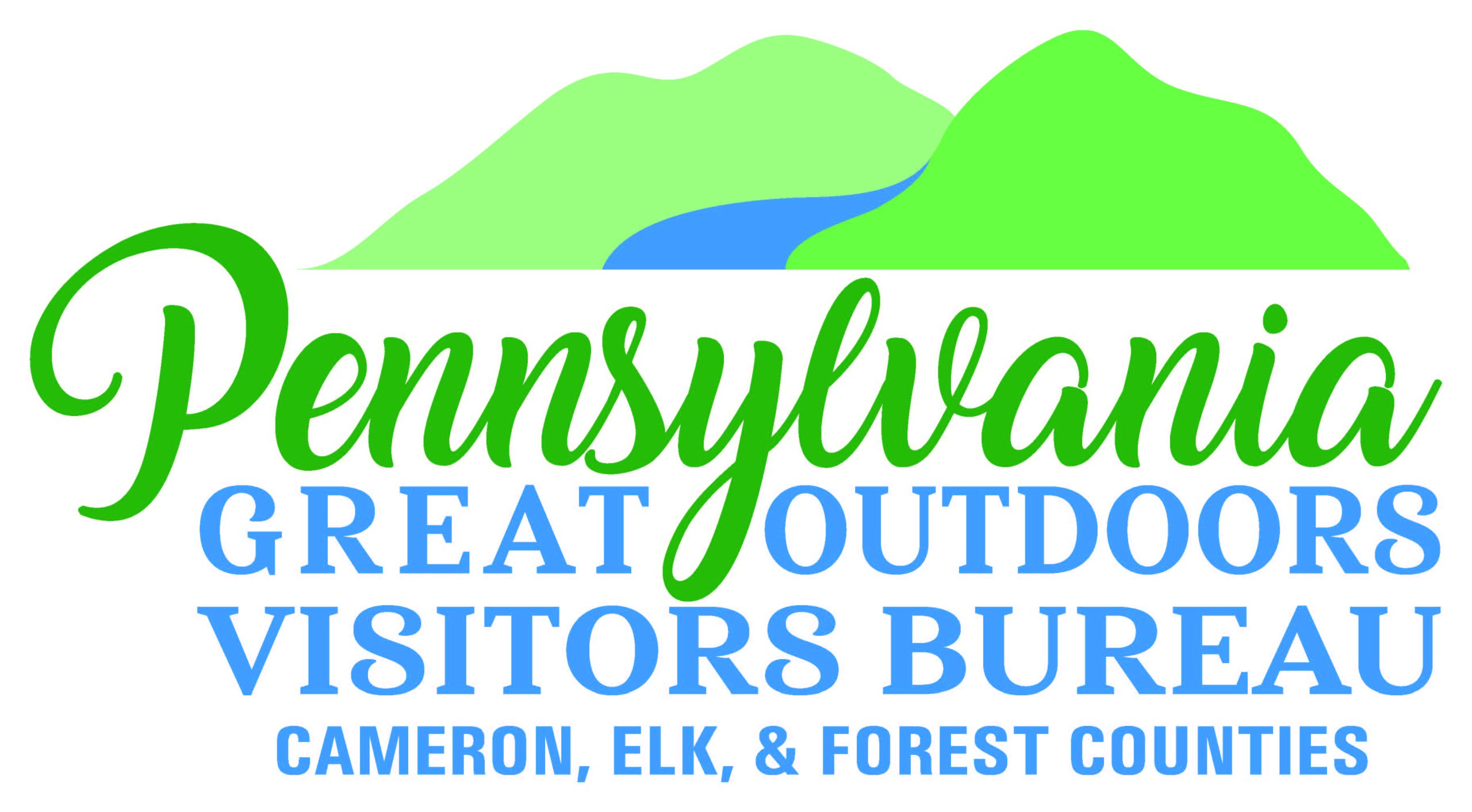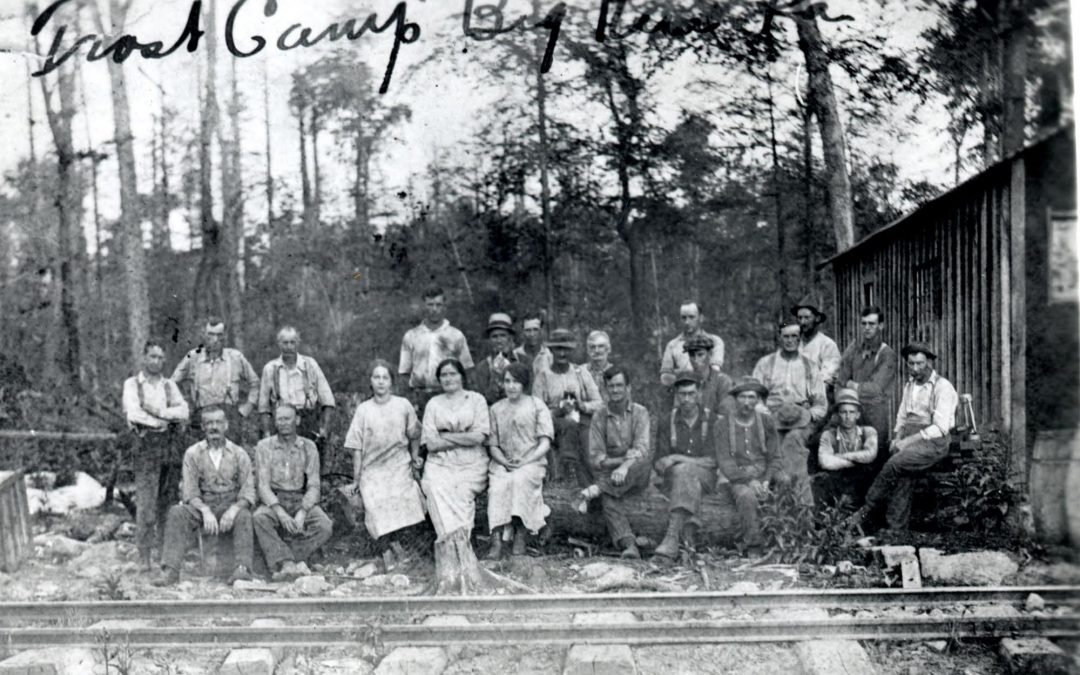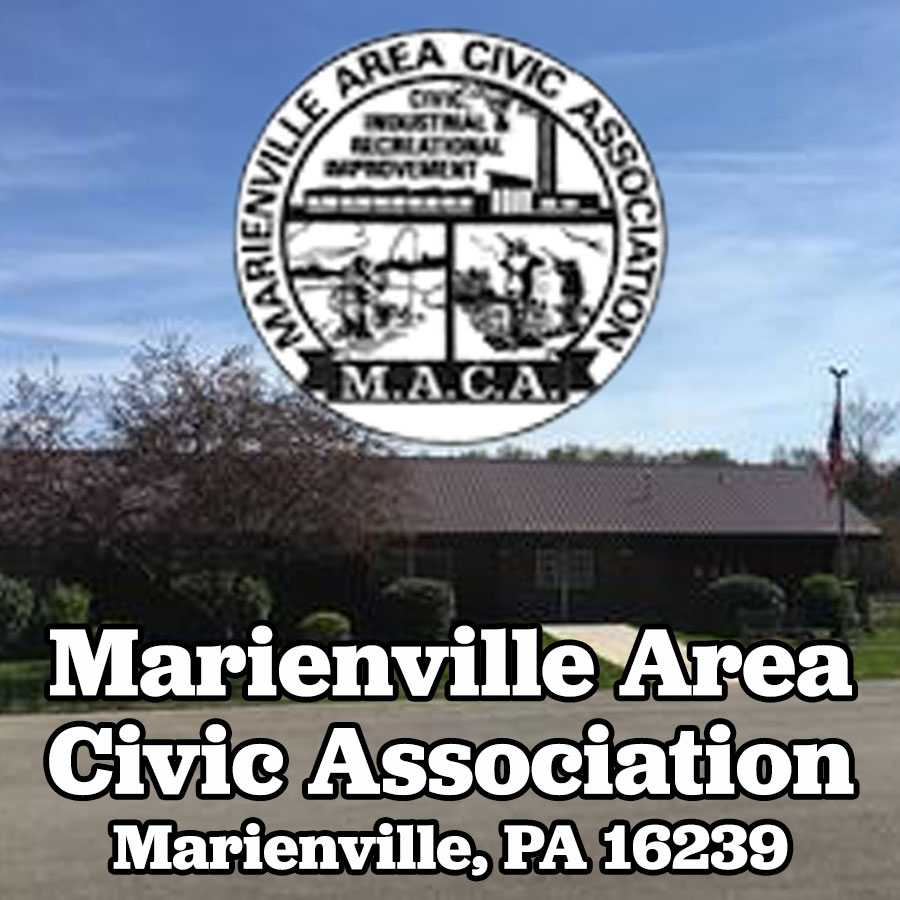By Bob Imhoff
Big Run not to be confused with Big Run located in Jefferson County was the site of the huge Central Pennsylvania Lumber Company logging railroad operation known as the Bear Creek Tramroad.
The site and lands surrounding Big Run are tied by ownership to the huge United States Leather Company with offices in Ridgway, Elk County, PA and through an organizational decision by the Board of Directors that established the Central Pennsylvania Lumber Company with headquarters in Williamsport, Lycoming County, PA. The more progressive members of the Board of Directors of the Untied States Leather Company felt that if others could make a profit cutting timber then why couldn’t they. Accordingly, the Central Pennsylvania Lumber Company was incorporated on April 29, 1903. The creation of the CPL to cut all the timber on the lands owned by the United States Leather Company led to a tremendous buildout beginning in Sheffield some three years later in 1906. Big Run Junction was a site of intense activity with locomotives coming down the Big Run valley from the Bear Creek (Rattlesnake Dip) site loaded with hemlock bark heading down the Tionesta Valley Railway and eventually the Clarion River Railway to the tanneries in Arroyo, Portland Mills, Ridgway and Wilcox. Hardwood timber was switched at Big Run to the Tionesta Valley Railway for transport to the huge mill in Sheffield. History states that the Owls Nest Siding that had three grades side by side for staging cars scheduled for the six and one-half mile trip down the Big Run valley to Big Run at its peak of operation would have as many as one hundred cars loaded with bark or logs waiting at the siding for the trip.
CPL and the Sheffield Mill
 Immediately after the new company was formed, plans were laid for a large mill at Sheffield. Here was an ideal location in a broad flat valley, with ample room for a large plant, log pond, and storage space for finished lumber. Within range of Sheffield, the company owned well over 100,000 acres of virgin timber. This area was traversed by the Tionesta Valley Railway, which would be used to transport logs. While the new company was getting firmly established, three years elapsed before an initial start was made to construct the Sheffield mill. During the latter part of 1906, one hundred acres of land, lying about one mile north from Sheffield, was purchased for the mill site. The Tionesta Valley Railway built an extension from near the center of town. This followed the west bank of the creek to the mill pond, thus bringing log trains to the mill site. A second extension, having a third rail, branched off the main line near the leather warehouse. This line was built to service the lumber yard where numerous spurs branched between the lumber docks. Here standard gauge cars would be loaded for shipment. A switch and siding made connection with the Pennsylvania Railroad on the north side of town. This eliminated the hauling of lumber through the town to the older connection on the east side of town. A year was consumed in mill construction. This was no ordinary mill built with a wooden frame covered with rough sawed lumber. Nor did the machinery come from an older mill to be reinstalled. This mill was planned to become the largest sawmill ever to exist in the State of Pennsylvania. Moreover, it embodied the latest modern improved construction, and was equipped with the latest type improved machinery. The buildings housing the machinery were constructed of steel reinforced concrete. The wall, floors, partitions and roof were of solid reinforced concrete, with supporting pillars and cross members of concrete. The whole, when finished was one solid piece of concrete, making it virtually fireproof. The only wood used was for the forms used in pouring concrete. At the south end of the mill, a long lumber sorting shed was added being at right angles with the main building, extending eastward for over three hundred feet.
Immediately after the new company was formed, plans were laid for a large mill at Sheffield. Here was an ideal location in a broad flat valley, with ample room for a large plant, log pond, and storage space for finished lumber. Within range of Sheffield, the company owned well over 100,000 acres of virgin timber. This area was traversed by the Tionesta Valley Railway, which would be used to transport logs. While the new company was getting firmly established, three years elapsed before an initial start was made to construct the Sheffield mill. During the latter part of 1906, one hundred acres of land, lying about one mile north from Sheffield, was purchased for the mill site. The Tionesta Valley Railway built an extension from near the center of town. This followed the west bank of the creek to the mill pond, thus bringing log trains to the mill site. A second extension, having a third rail, branched off the main line near the leather warehouse. This line was built to service the lumber yard where numerous spurs branched between the lumber docks. Here standard gauge cars would be loaded for shipment. A switch and siding made connection with the Pennsylvania Railroad on the north side of town. This eliminated the hauling of lumber through the town to the older connection on the east side of town. A year was consumed in mill construction. This was no ordinary mill built with a wooden frame covered with rough sawed lumber. Nor did the machinery come from an older mill to be reinstalled. This mill was planned to become the largest sawmill ever to exist in the State of Pennsylvania. Moreover, it embodied the latest modern improved construction, and was equipped with the latest type improved machinery. The buildings housing the machinery were constructed of steel reinforced concrete. The wall, floors, partitions and roof were of solid reinforced concrete, with supporting pillars and cross members of concrete. The whole, when finished was one solid piece of concrete, making it virtually fireproof. The only wood used was for the forms used in pouring concrete. At the south end of the mill, a long lumber sorting shed was added being at right angles with the main building, extending eastward for over three hundred feet.
A log pond of over five acres was located north of the mill. An entire log train could be spotted beside the pond to be unloaded without moving a car. Log train crews left the trains on yard tracks, then picked up a string of empties for return to the woods. A yard engine would place the loaded cars at the pond where a crew of men were kept busy unloading them into the pond.
The plant was completed in February 1908 and the first log was sawn by Earl Catlin on February 24th. The first logs sawn in this new, modern mill came from Dave Frost’s in Highland Township near Nansen. The logs were hauled over he Elk and Highland Railroad to Coon Run Junction and there transferred to the Tionesta Valley Railway for the trip to Sheffield.
Based on average timber, including hemlock and hardwood, the Sheffield mill was planned to saw 180,000 feet in an eight-hour day. However, as time proved, this figure was a gross understatement. A daily tally of output was returned to the local office. This daily report of production was, in turn, forwarded to the Williamsport office. On March 16, 1922, the records report the mill sawed 229,000 feet of lumber in eight hours. Again, on March 14, 1923, a new record was set, when the mill cut 337,074 feet of hemlock in ten hours. This record run was published in the Warren newspapers.
The railroads mentioned in this section, the Elk and Highland and Tionesta Valley Railway will be discussed in future articles but form the network that included the Bear Creek Tramroad and its terminus point at Big Run.
Jobbers and Camps of the CPL
 Bud Ellithorpe, (Ellithorpe Run is a tributary to Big Mill Creek in the Brush Hollow Ski Trail Complex) was one of the early jobbers who had his first camp in 1907 near Corduroy. He cut logs for the company during the next twenty years. In Forest County a large amount of timber was cut around Sheffield Junction and Watson Farm, along what was called the “level grade”. At the same time the Watson Branch was logged. By 1916 logging had extended to Straight on Spring Creek. Heisler Number 54 from Loleta, and Climax Number 14 from the Elk and Highland, were kept at Straight for use on logging branches. On the West Branch of Tionesta Creek, in Warren County, logging began soon after the mill started, lasting until 1918. At the same time, scattered tracts were cut near Cherry Grove and Dunham’s Siding along the headwaters of both Minister Creek and the Farnsworth.
Bud Ellithorpe, (Ellithorpe Run is a tributary to Big Mill Creek in the Brush Hollow Ski Trail Complex) was one of the early jobbers who had his first camp in 1907 near Corduroy. He cut logs for the company during the next twenty years. In Forest County a large amount of timber was cut around Sheffield Junction and Watson Farm, along what was called the “level grade”. At the same time the Watson Branch was logged. By 1916 logging had extended to Straight on Spring Creek. Heisler Number 54 from Loleta, and Climax Number 14 from the Elk and Highland, were kept at Straight for use on logging branches. On the West Branch of Tionesta Creek, in Warren County, logging began soon after the mill started, lasting until 1918. At the same time, scattered tracts were cut near Cherry Grove and Dunham’s Siding along the headwaters of both Minister Creek and the Farnsworth.
Logging railroads long the West Branch extended up Elkhorn, Adams, Wildcat, Jones and Toms Runs. Hart and Henderson had camps in this area, one being located at the mouth of Toms Run. To reach timber on the ridge between the West Branch and Farnsworth Creeks, rail lines surmounted the grade through a series of switchbacks. The amount of timber cut by the C. P. L. mills was dictated by the needs of the tanneries, rather than by how much lumber could be produced and sold. This explains why their plants did not operate consistently day and night. It was also the chief reason why the Sheffield mill cut timber in such widely separated areas at the same time. The bark peeled along the West Branch would go to tanneries at Clarendon and Stoneham, while that from Forest County might fill the need at Brookston and Sheffield. Most of the bark from Highland and Spring Creek Townships went to supply the Arroyo, Ridgway and Wilcox tanneries. About 1910, logging operations started in Highland Township, south of Sackett, on the upper waters of Red Lick, Twin Lick, and Pine Runs.
Previously the Spring Creek Railway had constructed logging branches up Pigeon and Hill Runs to take out logs to the Hall and Gardner mill at Hallton. When Hall and Gardner finished cutting their timber, no more being available, this mill was closed in 1908. The Central Pennsylvania Lumber Company extended these standard gauge branches several miles to several warrants of timber near Sackett and Highland. Two forty-two-ton Shay locomotives were brought in from other operations for use in this area. Logs were hauled to Parrish where they were transferred to the Tionesta Valley Railway and then taken to Sheffield. To affect the transfer, a large skidway was built with a standard gauge track on one side and a narrow gauge on the other side. Logs were unloaded onto the skidway, rolled across, and reloaded onto the narrow-gauge cars. All this was done by hand, later this method was abandoned, a log loader (Barnhart or American) being used to transfer the logs. Arlie Lease, who formerly worked for Teddy Collins at Kellettville, operated the loader. Dave Frost, whose name will appear in the Big Run narrative, was one of the jobbers. He had camps on Twin Lick, Red Lick and Pine Runs, in addition to a fourth camp near the Sackett pump station. During 1914 the Tionesta Valley Railway laid a third rail from Parrish to Hallton. Following that, all standard gauge logging spurs were discontinued. One Shay, Number 3, was sold to Clawson Chemical Company, to be used in hauling chemical wood to Hallton.
Considerable logging was done in the area along the South Branch of Tionesta Creek using the James Mill branch. A five-mile branch was extended up Crane Run. After the acquisition of the Elk and Highland a few tracts of timber were cut along that line. When this area was finished the railroad was left intact for a time, but not used,
Until about 1920, Tionesta Valley Railway engines and crews operated all log trains. The geared engines were used on the woods branches to bring the cars to the main line.
Transition to the Bear Creek Tramroad and the Town of Big Run
 During late 1921, operations were begun at Big Run. These were destined to become the largest concentrated logging railroad operation to ever exist in Pennsylvania. Big Run, or Big Run Junction as it was sometimes called times called, was the headquarters of this huge! undertaking. It was located at the mouth of Big Run, on the Tionesta Valley Railway, about four miles north of Hallton. From Big Run the logs had to be moved more than twenty-eight miles to reach the Sheffield mill the logs taken from over 20,000 acres passed through Big Run on their way to Sheffield. Big Run is only a memory today, its location an isolated spot in the Allegheny National Forest. A gated dirt road passes through there, and there is little to remind one that the spot once bustled with activity. There existed a store, several houses, and to accommodate the employees, a boarding house conducted by James Hillyer and his wife. Hillyer and his sons, James, Jr., and Clyde worked for the company.
During late 1921, operations were begun at Big Run. These were destined to become the largest concentrated logging railroad operation to ever exist in Pennsylvania. Big Run, or Big Run Junction as it was sometimes called times called, was the headquarters of this huge! undertaking. It was located at the mouth of Big Run, on the Tionesta Valley Railway, about four miles north of Hallton. From Big Run the logs had to be moved more than twenty-eight miles to reach the Sheffield mill the logs taken from over 20,000 acres passed through Big Run on their way to Sheffield. Big Run is only a memory today, its location an isolated spot in the Allegheny National Forest. A gated dirt road passes through there, and there is little to remind one that the spot once bustled with activity. There existed a store, several houses, and to accommodate the employees, a boarding house conducted by James Hillyer and his wife. Hillyer and his sons, James, Jr., and Clyde worked for the company.
There were also long sidings for storage of empty and loaded log cars, a water tank, and facilities for refueling the locomotives. It acted as terminal for the logging engines and Tionesta Valley helper engines.
There was a machine shop, equipped to make repairs on locomotives, loaders, and cars. Bill Winslow supervised the shop crew. Walter Drum was a machinist. Truman McCaslin was a foreman and had two sons, Gerald and Douglas, who worked on log trains. Alex Teed did the blacksmithing.
An office was staffed by Emmett Pratt, son of John Pratt, Fred Incho, Carl Erickson and Ted Miller the timekeeper. The main line of the logging railroad began at Big Run following Big Run Creek about six miles to the crest of the hill south of Owls Nest. The first few miles of this line followed an older grade built by Elk Tanning Company to take out bark and logs to the Hall and Gardner mill in Hallton. One branch existed along the top of the hill, extending north a few miles, while two other branched off to the south. Other of these latter branches reached the upper end of Irwin and Little Runs; the other fanned out to Cole, Davidson and Pole Road Runs, reaching Bear Creek. This area was logged before the Bear Creek region.
The main line continued from the top of the hill, following Italian Shanty Run to Bear Creek. It then followed this stream north to the headwaters. At the top of this hill it came within sight of Highland Corners, other branches went up Red Lick and Twin Lick, Pine Run, Maple Run and Pigeon Run from the west side of Bear Creek. From the East side, branches were constructed on Blood Run and smaller hollows. A branch was built down Bear Creek, ascended the hill, passing around a point known as “Huckabone Curve” to Otter Creek. This line then proceeded up both branches of Otter Run to the beginning of those streams. The logging railroad from Big Run, with its many branch lines, included more than seventy-five miles of trackage.
‘When operations reached Bear Creek, another headquarters camp was set up at the mouth of Blood Run. It boasted a trainman boarding house, presided over by Mr. and Mrs. Robison, an office, several rough ‘board’ shanties used for living quarters’ and a water tank.
A camp housing the track construction men was near.’ Two engines were kept there at night, the crews living in the camp. Since it was so isolated, none of the men were anxious to be assigned there. Ed Smith a conductor remembered the houses at Big Run were built from rough sawn lumber with no plaster on the inside walls. Gas was plentiful from wells in the area. Coal and electricity were furnished free. Rent only cost $7.50 a month’ He quit the job for the reason he didn’t wish to be sent to Bear Creek, the area now known as the Rattlesnake Recreation Area.
The Big Bun operation started with four locomotives and loaders. When the Porter Farm and Spring Creek jobs were finished, the engines, loaders, cars’ and employees were transferred to the new operation at Big Run. Two more locomotives, Climax Number 60 from Laquin and Climax Number 61 from Masten were added being converted to narrow gauge. Because of its size Climax Number 7 came from Masten on a set of standard gauge trucks. These trucks were probably borrowed from Number 61.
The logging operations at Big Run reached their maximum proportions in 1925 and continued at this pace for the next three years. During bark season, ten locomotives were in use. Seven log loaders were kept busy loading cars. Each one had a quota of twenty-five cars to load per day. A spare loader was kept at the shop. When a working loader broke down, the spare was pressed into service while repairs were being made. At least seventeen jobbers held contracts to cut timber on Big Run and Bear Creek. Several had more than one camp. Dave Frost and his son, Ward, had several contracts, one camp being on Little Run, another on Twin Lick. Another son, Chester, had a camp and contract on Little Run. William Kronnenwetter, from St. Marys, worked a contract on Irwin Run. Bud Ellithorpe had at least one job on Red Lick. This camp was destroyed in the Great Owls Nest Fire on May 17, 1926. John Goochee and his partner Lew Josnick had a contract on Twin Lick Run.
Other Notes on Sheffield, Big Run and Bear Creek.
The huge hardwood/hemlock mill at Sheffield which at its peak was the largest in the world closed on July 3, 1941.
The Big Run cutting operations finally came to an end during 1929, another of the victims of the stock market crash and the Great Depression. Having spent many years tracking all the grades of this incredible system it is an amazing part of lumbering in Elk County

















